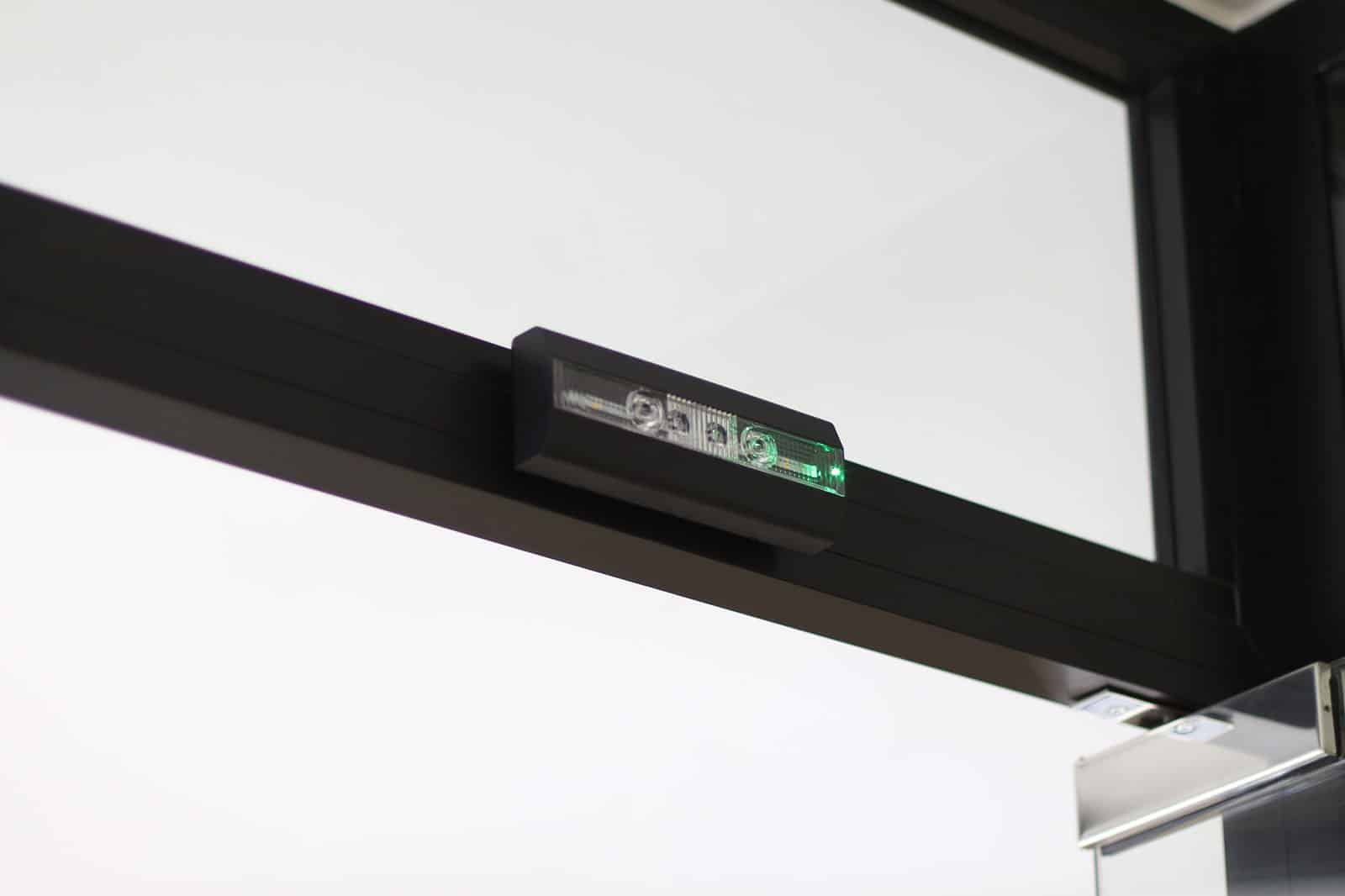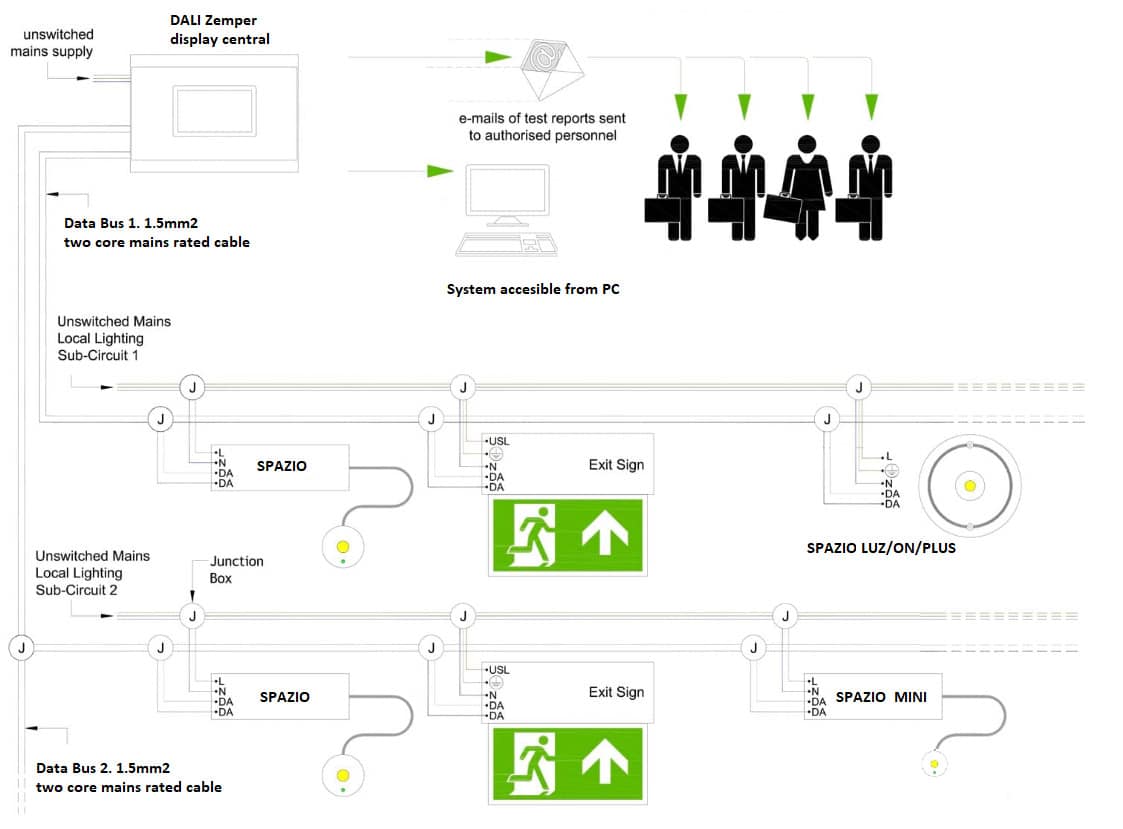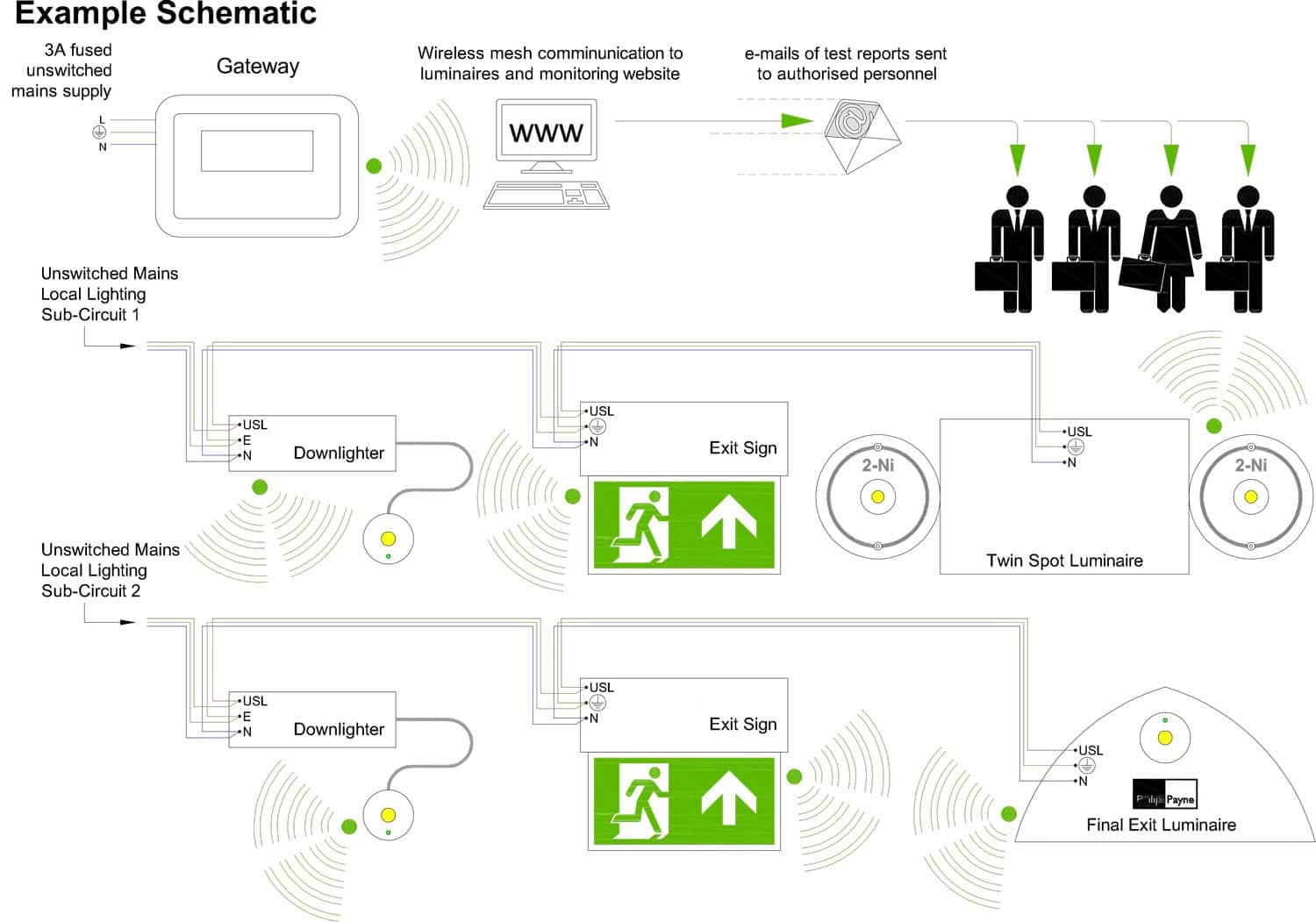A ‘HOW TO GUIDE’ FOR YOUR EMERGENCY LIGHTING MONITORING & TEST DESIGN
This guide has been created to support Electrical Consultants as they scope and design an emergency/back-up lighting installation with automatic testing, for either a new build or a retro-fit.
Emergency lighting test systems are a mandatory safety constituent and an appropriate installation will reference two British Standard base guides.
As detailed in our earlier blog, they are the:
and the
Automatic Test Systems for Battery Powered Emergency Escape Lighting BS EN 62034.

What’s required?
Each installation includes a monthly function test and an annual full duration test. They also submit reports highlighting failures, when they occur.
Do note, that with these systems, a visual check of components and indicators should be included. This check should be made regularly to ensure that the emergency luminaire is present and intact, and that all light sources are working and visible.
These sections within the standard BS EN 62034, refer in particular, to the automatic test requirements for your emergency lighting:
4.2 Monitoring of the timed circuit
4.3 Functional requirements
4.3.1 The automatic test system
4.4.2 Intercommunications failure
4.4.4 Component failures
4.4.7 Software failures
5.1 Functional test
5.2 Duration test
6.2.2 Timing accuracy
6.3.2.2 Testing alternate luminaires
6.3.3.4 Limited duration tests.
Wired or wireless?
The most important question to ask is, will your automatic test system deliver wired or wireless monitoring?
The standards for wired and wireless are fundamentally the same. The only key difference is the communication between the luminaires and the monitoring.
It’s the same as using either Wi-fi, or structured cable connections for your computer and internet. Wired is communicated normally via a two-core cable connected to every fitting and device in a ring topology. ‘Wireless’ of course, speaks for itself.
Let’s look at the wired option and how it complies.

Let’s look now at the wireless system

As indicated above, the fundamental difference is, you don’t need that two-core cable infrastructure running throughout a building, if you are communicating via wireless.
In addition to a complex and costly install, if something fails with wired, it is of course, harder to locate and correct the issue, through an embedded system.
In addition, as you make any structural or room use changes, you may also have to reconfigure a wired installation.
Wireless allows you to communicate and talk to the system, across three platforms.
The three wireless platforms are:
1: Wireless Mesh
2: Wireless Star
3: Wireless Cluster Tree
The main difference is that with a wireless mesh there is no single point of failure as it does not use a master/slave configuration.
Radio mesh networks typically utilise two frequencies to communicate, these are:
1: 2.4 GHz
2: 868 MHz.
Zemper recommends
For most new building installations and all retro-fits, we recommend the wireless option, due to increased flexibility and reduced installation complexity.
The benefits include:
· Significant costs savings in terms of the installation and fit-out (labour and materials)
· Simple system reconfiguration.
· Proactive maintenance reducing ongoing operational costs.
Why talk to Zemper Emergency Lighting?
Experts in our field, Zemper Emergency Lighting have supported the building sector for 50+ years.